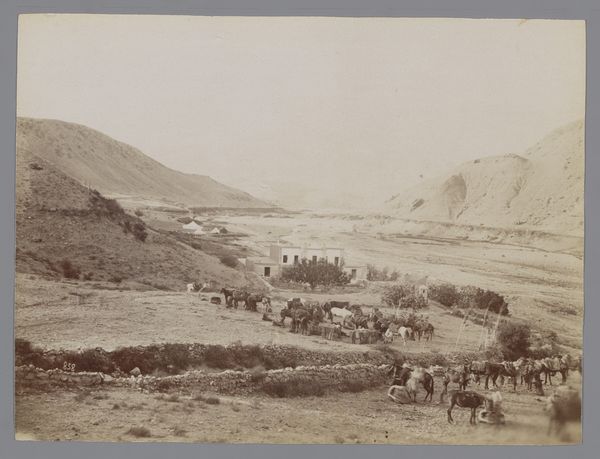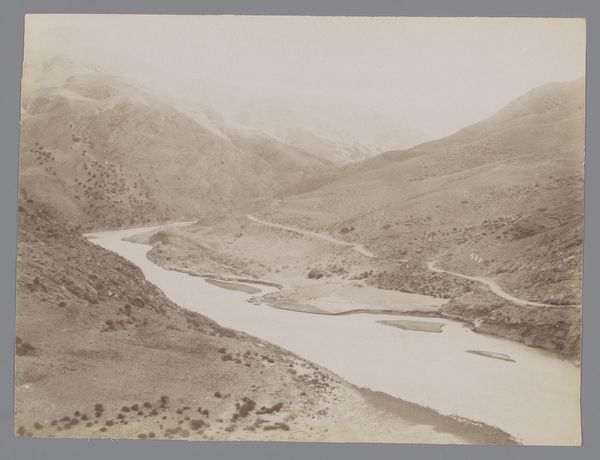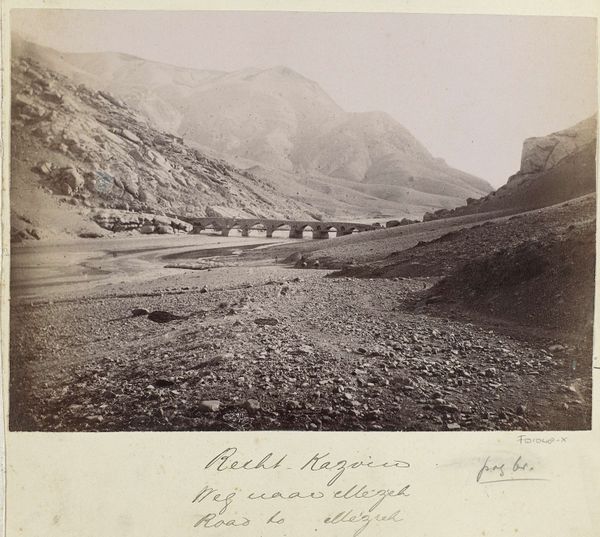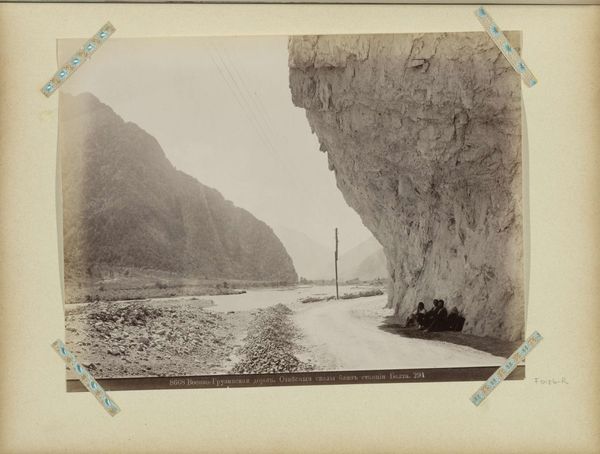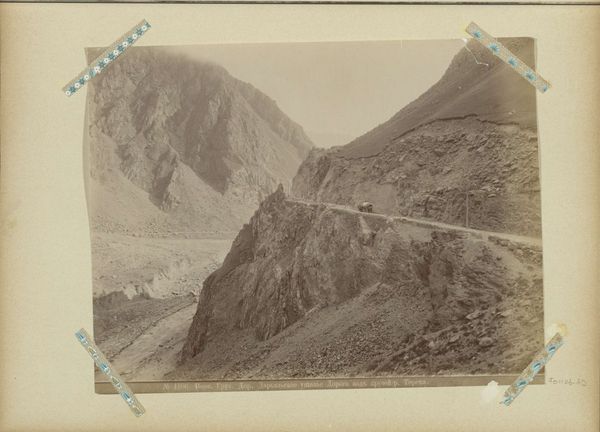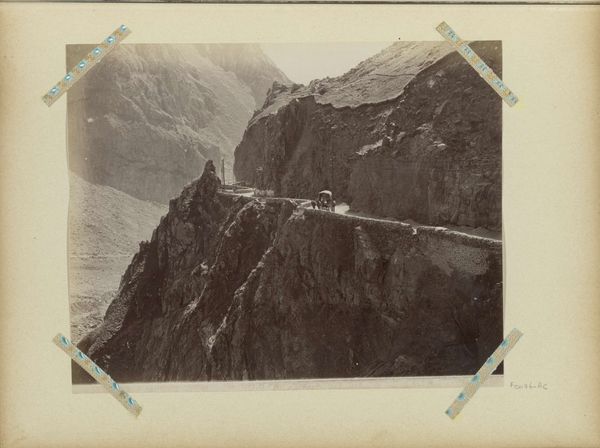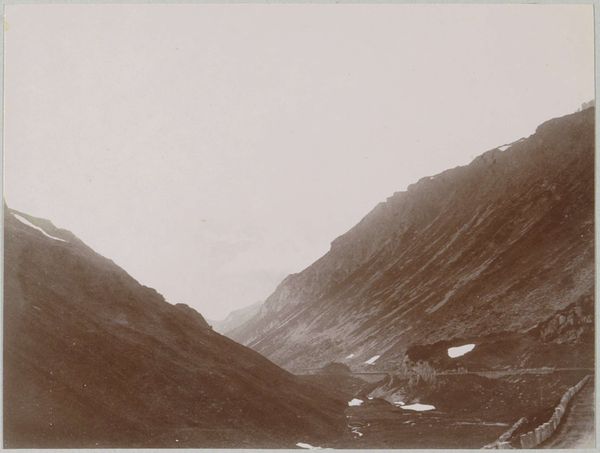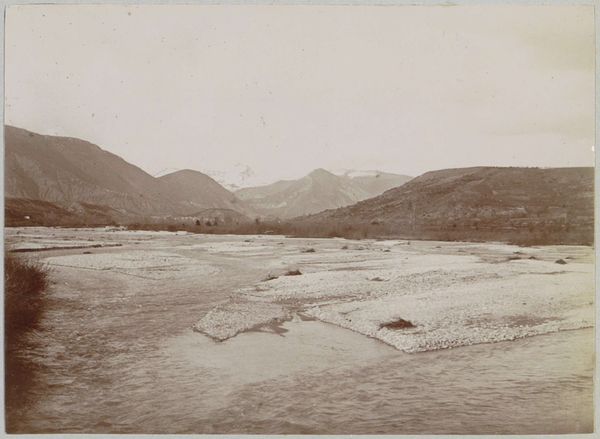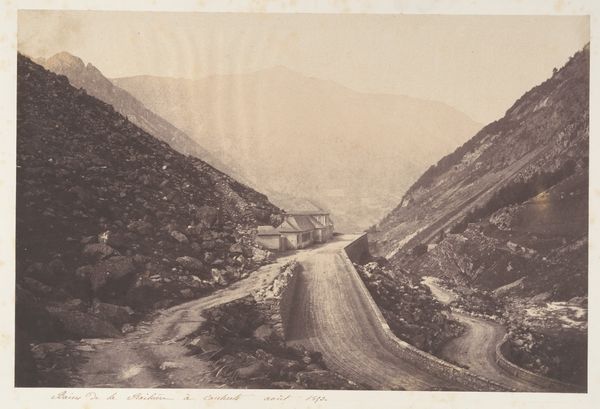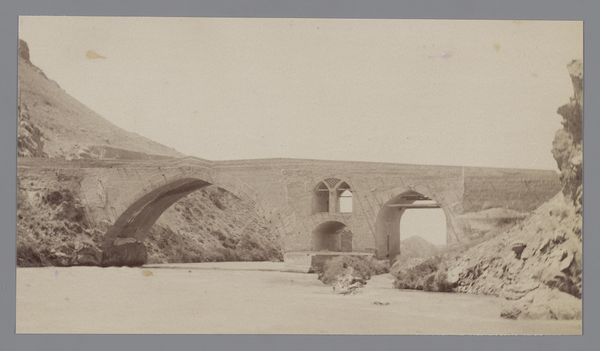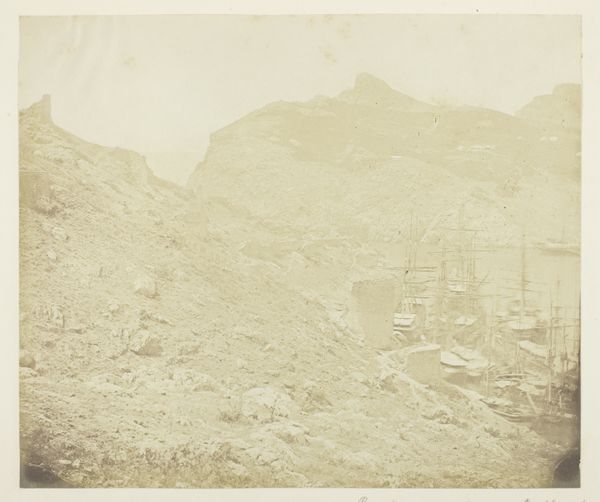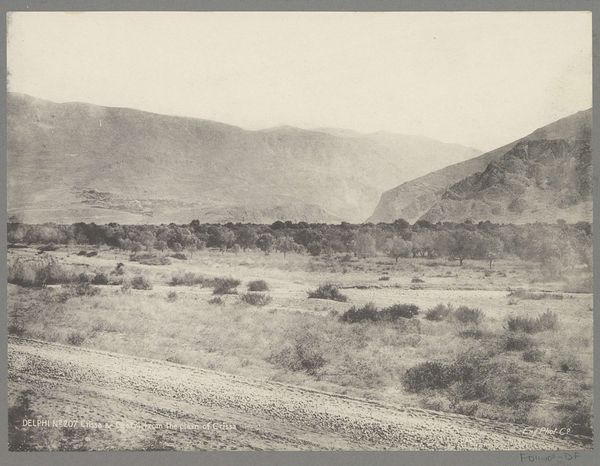![Brug, Iran [?] by Antoine Sevruguin](/_next/image?url=https%3A%2F%2Fd2w8kbdekdi1gv.cloudfront.net%2FeyJidWNrZXQiOiAiYXJ0ZXJhLWltYWdlcy1idWNrZXQiLCAia2V5IjogImFydHdvcmtzL2Y4Yjk0Y2RiLWZjMGMtNGUxNC1iZWQwLWNjYzVmMzc2NTRmMy9mOGI5NGNkYi1mYzBjLTRlMTQtYmVkMC1jY2M1ZjM3NjU0ZjNfZnVsbC5qcGciLCAiZWRpdHMiOiB7InJlc2l6ZSI6IHsid2lkdGgiOiAxOTIwLCAiaGVpZ2h0IjogMTkyMCwgImZpdCI6ICJpbnNpZGUifX19&w=3840&q=75)
photography
#
landscape
#
photography
#
ancient-mediterranean
#
orientalism
Dimensions: height 99 mm, width 163 mm
Copyright: Rijks Museum: Open Domain
Curator: This photograph, titled "Brug, Iran [?]," is attributed to Antoine Sevruguin and thought to have been created sometime between 1880 and 1910. Editor: It's striking how the subdued sepia tones emphasize the solidity of the bridge against that rugged landscape. I can almost feel the weight of the stones and sense the intense labor that went into its construction. Curator: Sevruguin operated a commercial photography studio in Tehran, and his work offers a lens into late 19th-century Persian society. His images, circulated widely, shaped Western perceptions of the "Orient," often reinforcing existing colonial power dynamics. Editor: Precisely. This isn’t just a scenic view, it's a document loaded with implications about resource extraction and labor. Who built this bridge, under what conditions? What was transported across it and for whom? These are vital questions that the materiality prompts us to consider. Curator: Indeed. The photograph's composition is interesting too. The bridge acts as a visual link between different realms, hinting at narratives of connectivity and movement. It reflects not only architectural ingenuity, but also political aspirations and infrastructure development during a time of immense change and colonial interventions. Editor: You're right. Look closely, you can practically smell the dust and feel the aridity captured here. The choice of medium itself—photography—contributes to a particular representation. It was a technological marvel that could also distort cultural understanding. It almost implies a scientific eye, one cataloging, measuring, and possessing the land. Curator: And the inclusion of mountains and ancient motifs reinforces the Orientalist gaze that celebrated "exotic" locales. So Sevruguin’s photography presents this scene for distant audiences shaped a shared vision of what it meant to interact and control the region during the late 19th century. Editor: Absolutely, and the bridge as an object embodies a connection. Studying how its makers conceived of those connections, the tangible work behind those intentions…that gives us a ground view of social transformation. Curator: By understanding that colonial contexts shape our consumption of such works, we can avoid complicity in problematic representations, instead focusing on respectful interaction and intellectual rigor when approaching complex topics such as this. Editor: A welcome reminder that even still, captured moments prompt essential considerations about craft, design, history and who is given voice in an era marked by tremendous tension in an important cultural moment.
Comments
No comments
Be the first to comment and join the conversation on the ultimate creative platform.

